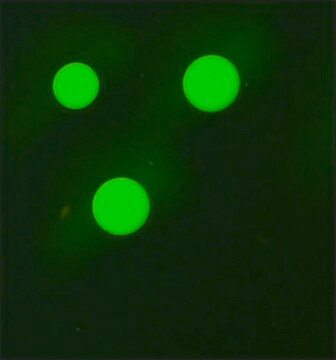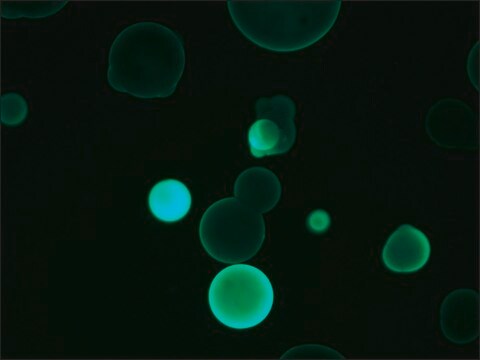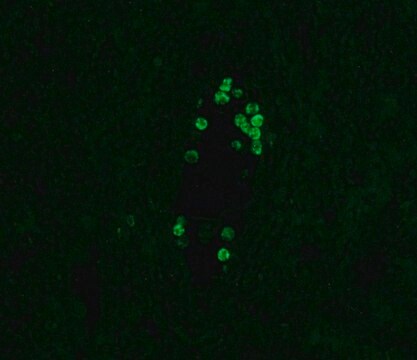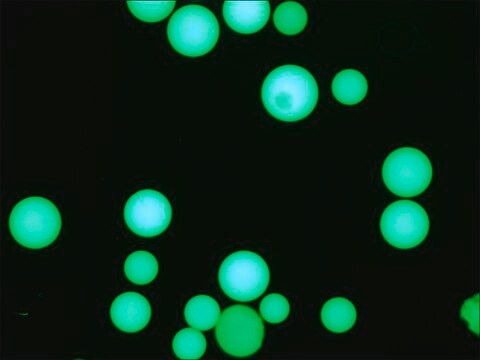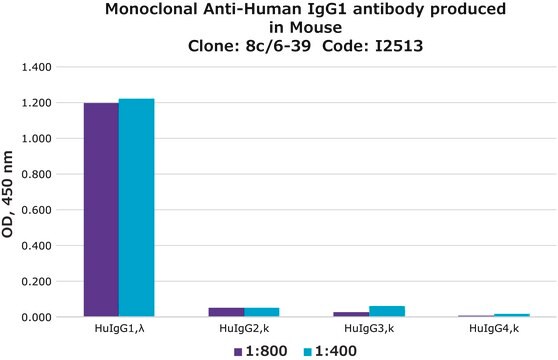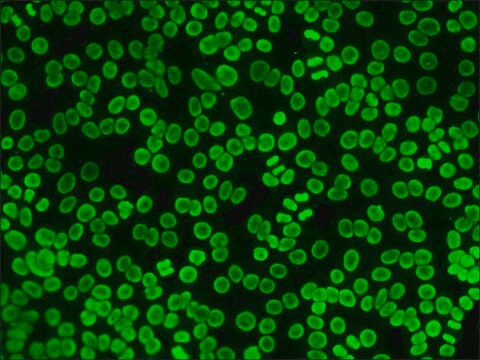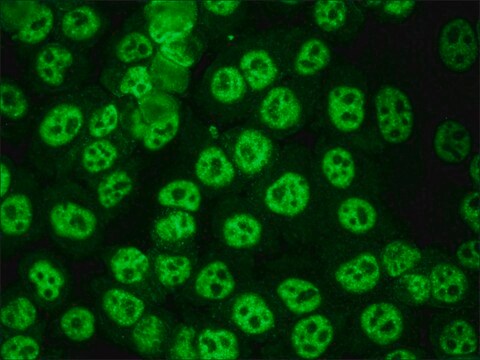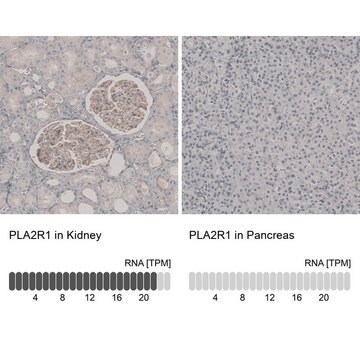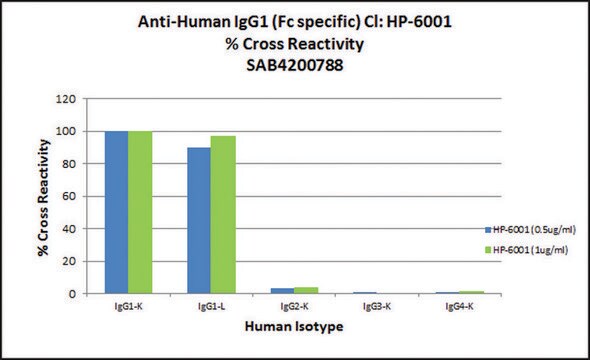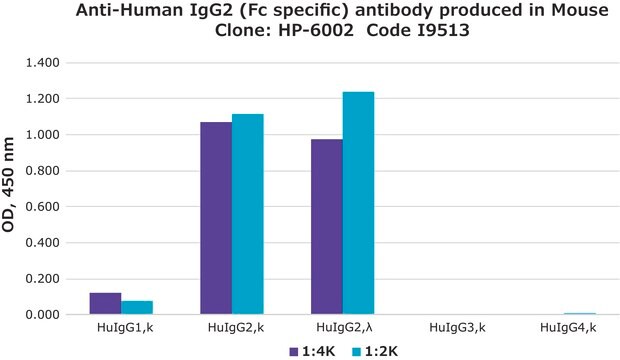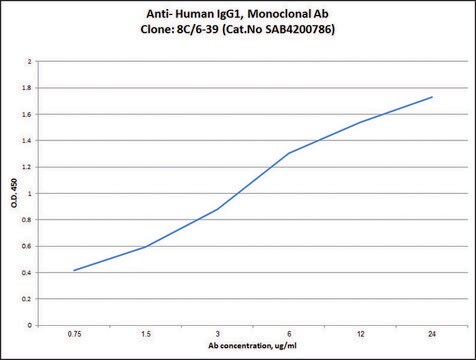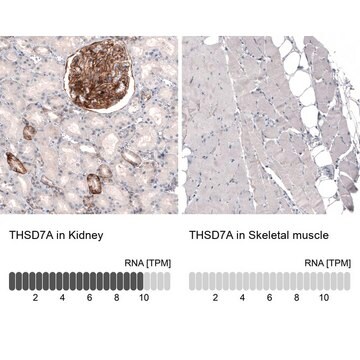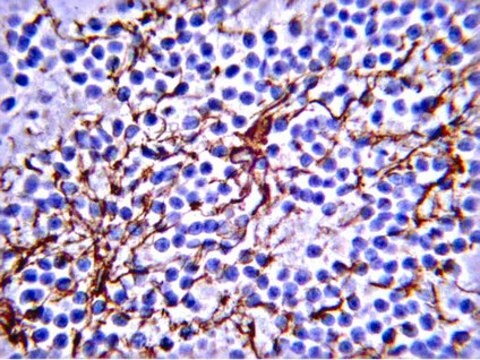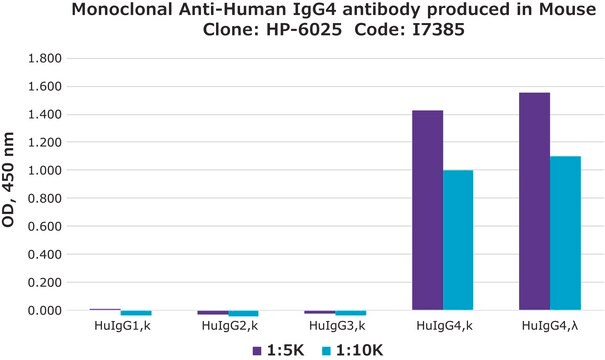Kluczowe dokumenty
F0767
Anti-Human IgG1−FITC antibody, Mouse monoclonal
clone 8c/6-39, purified from hybridoma cell culture
Synonim(y):
Monoclonal Anti-Human IgG1 (Fc specific)
About This Item
Polecane produkty
pochodzenie biologiczne
mouse
białko sprzężone
FITC conjugate
forma przeciwciała
purified from hybridoma cell culture
rodzaj przeciwciała
secondary antibodies
klon
8c/6-39, monoclonal
Formularz
buffered aqueous solution
warunki przechowywania
protect from light
metody
dot immunobinding: 1:64
particle immunofluorescence: 1:32
izotyp
IgG2a
Warunki transportu
dry ice
temp. przechowywania
−20°C
docelowa modyfikacja potranslacyjna
unmodified
Szukasz podobnych produktów? Odwiedź Przewodnik dotyczący porównywania produktów
Powiązane kategorie
Opis ogólny
Zastosowanie
Flow cytometry/Cell sorting (1 paper)
Działania biochem./fizjol.
Postać fizyczna
Oświadczenie o zrzeczeniu się odpowiedzialności
Nie możesz znaleźć właściwego produktu?
Wypróbuj nasz Narzędzie selektora produktów.
Kod klasy składowania
10 - Combustible liquids
Temperatura zapłonu (°F)
Not applicable
Temperatura zapłonu (°C)
Not applicable
Wybierz jedną z najnowszych wersji:
Masz już ten produkt?
Dokumenty związane z niedawno zakupionymi produktami zostały zamieszczone w Bibliotece dokumentów.
Klienci oglądali również te produkty
Produkty
Antibody-based serology tests are useful in identifying subjects with an adaptive immune response to the SARS-CoV-2 virus. Anti-human immunoglobulin antibodies allow for quick and simple, yet reliable assays with easy readouts and can also be adapted for high-throughput screening.
Nasz zespół naukowców ma doświadczenie we wszystkich obszarach badań, w tym w naukach przyrodniczych, materiałoznawstwie, syntezie chemicznej, chromatografii, analityce i wielu innych dziedzinach.
Skontaktuj się z zespołem ds. pomocy technicznej